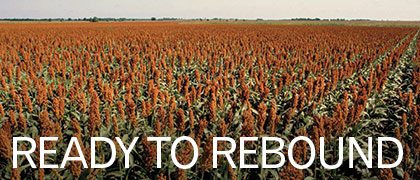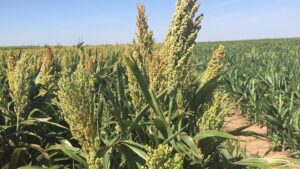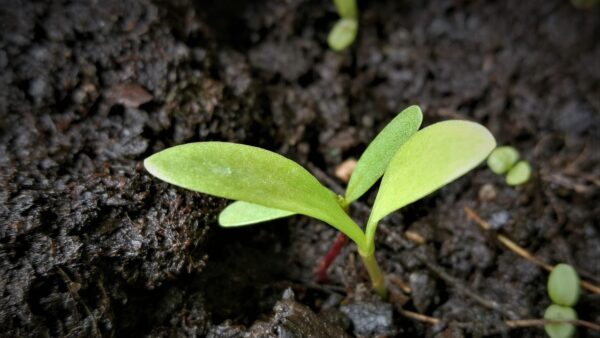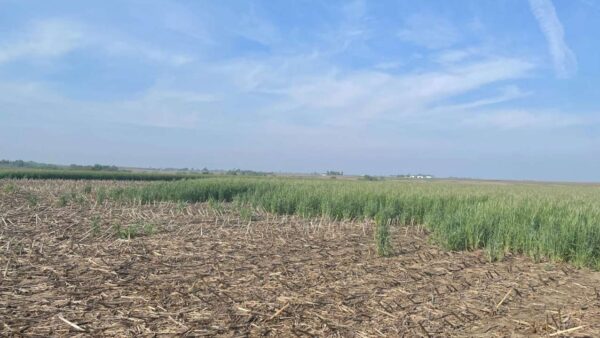Growing popularity and adverse weather conditions create challenges for sorghum seed producers.
As water concerns grow, more farmers around the world have taken a serious look at sorghum. This cereal crop, also known as milo, is prized for enduring parched conditions, but seed producers have struggled in recent years to realize a successful harvest themselves due to prolonged drought conditions. Possessing characteristics interchangeable with corn, sorghum is used for everything from gluten-free foods to ethanol and interest in this versatile crop is expected to expand. Despite weather and supply challenges, among others, the seed industry believes it is positioned to meet grower demands and solidify sorghum’s place among this nation’s top crops.
Disaster Averted
Larry Richardson, president of the Vega, Texas-based Richardson Seeds, says the ongoing drought, especially over the last three years, had a considerable effect on sorghum seed production. “It’s just not conducive to producing high-quality seed. There were record low inventories coming in to the 2013 season.”
When it came time to plant this year’s seed crop, unfavorable weather conditions seemed to foretell another challenging year ahead. Fortunately, the rains came in July and August and temperatures cooled slightly to allow for good pollen flow. Richardson notes they anticipated a later-than-usual harvest, but with the return of hot and dry conditions in September, normal maturation occurred. “This is one of the best crops we’ve had in six to seven years. The yields are average and above and the qualities are excellent.”
Kay Porter, who serves as senior research manager for DuPont Pioneer from their Plainview, Texas facility, says the company has taken steps to position their seed production on irrigated acres in recent years. “Producing seed in those stressful years was challenging, but we’re looking at a good crop this year.”
The bounty came just at the right time. “We expect to have another good year of sorghum sales. We haven’t had inventory carryover in the last couple of years,” says Porter.
Continuous Improvements
DuPont Pioneer operates three research centers in the southern plains, two in Texas and one in Kansas. Staff at each facility focus their efforts on seed needs specific to that region. Porter credits the company’s sizeable sales representative and agronomist system for helping them tailor their breeding programs. “We align our program to address key concerns heard in the fields. That’s probably one of the things that set us apart. We get fairly constant feedback. Our breeding objective is performance stability. Sorghum is exposed to all kinds of elements, and we want to produce hybrids that are stable so as to minimize loss for growers.”
As for current needs, seed treatments have kept green and tinge bug issues to a minimum, but some regional disease problems have researchers working on solutions for downy mildew, anthracnose and head smut. Porter also notes lodging continues to be a challenge.
Richardson concurs that insect pressure has been kept to a minimum. He credits the use of seed treatments for preventing pest problems, although there is a need to combat midge damage, which systemic insecticides don’t currently address.
Richardson Seeds currently offers more than 30 hybrid grain and forage sorghums, along with a sorghum-sudan grass hybrid. The company anticipates growers will increasingly seek out more early-maturing varieties of sorghum for double-cropping purposes. “They give growers more options and the yields are still very good.”

Larry Richardson |
Currently, DuPont Pioneer is nearing completion of their ALS herbicide tolerance program for sorghum. “We took a different approach than others in that we established a trait integration program in winter nurseries to convert parent lines to herbicide tolerance,” Porter says.
So far, the use of sorghum for ethanol has had little effect on breeding programs. Currently, grain sorghum is sought for making this biofuel, but if interest turns to cellulosic production, Richardson is confident companies like his already offer the best forage varieties.
Advancement in sorghum research still pales in comparison to corn, but that’s changing, too. “Corn utilizes double haploid technology, but that’s not something we’re able to do yet in sorghum. We’re several years behind corn, but the advantage we have is that those tools can ultimately be used for sorghum—it’s just a matter of us catching up,” explains Porter.
A Promising Future
As long as drought and limited irrigation access remain issues for farmers, sorghum will be viewed as a practical choice. “Whether you talk to someone in the Ukraine, the EU or Japan, water is an issue,” says Richardson.

Kay Porter |
Continued breeding efforts, focused on drought tolerance, mean more corn could be grown on marginal land in the Midwest and Plains but, Porter says, “sorghum will always have a place in the western Great Plains where the stress is so severe.”
Sorghum is also being used as a management tool to combat herbicide-resistant weeds, especially in the southeastern states where it’s used as a rotational crop. Porter estimates acres in that corner of the country have doubled or tripled in the last few years.
The crop has become more attractive to those in dairy production as well, Richardson says, namely because sorghum requires one-third the input costs of corn with comparable tonnage on forage varieties. Still, when it comes to seed production, corn remains sorghum’s chief competitor for acres and also influences the financials of growing sorghum seed. Porter notes that seed producers are compensated based on commodity prices for corn.
Then there is the fact that grain sorghum is the only major feedstock to be granted an advanced biofuel pathway by the Environmental Protection Agency under the supplemental rule of the Renewable Fuel Standards. That announcement came in late 2012, and has already prompted some ethanol plants to make the switch from corn to sorghum, thus driving further demand.
Regardless of what it’s used for, high performance seed that’s well cultivated is rewarding growers. “Farmers are doing a better job of managing sorghum and, as a result, they are seeing a good return on their crop,” Porter says.
Maria Brown












